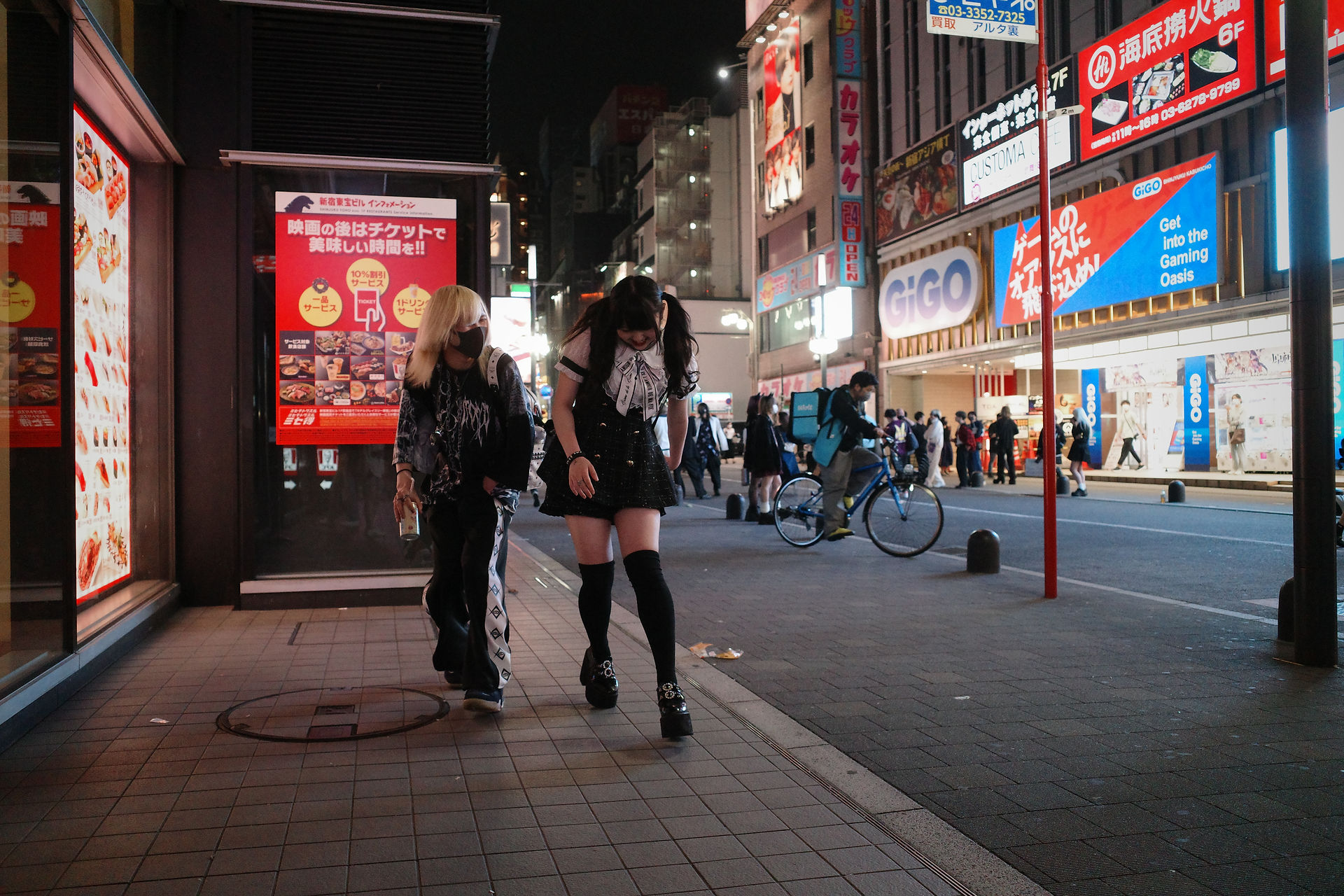
Space & Boundaries
Ways they create boundaries
by Kiara
Introduction
Public spaces constructed as spaces for adults (Valentine, 1996). The adults have the public spaces for their purposes. While youths and teenagers are often marginalised. They are ignored and do not have their own space. Since they are marginalised, they create their own space in the public spaces of adults. This is the case of Toyoko kids. They gather around in the corner of the hiroba and create their own space and community. The definition of boundary is that it is a socially constructed and is a product of society. It builds our sense of identity in the places. The Toyoko Kids are building a community of their won and this is how they use its There are several ways that they do this.

Leaving Around Bags
Another way they create boundaries is to leave their bags lying around. The toyoko kids who have large backpacks and luggage do not seem to care where their bags are. They would leave it on the ground near where they are gathered. They would move around the hiroba without being concerned about the bag they left behind. Not only does it take up physical space and function as a marking of their boundaries, it also shows that they are comfortable in the hiroba. Despite it being one of the largest red light districts in Japan, the youth of Toyoko kids feel comfortable and relaxed enough to leave their bags. They feel belonging and almost at home when they are in the hiroba with other Toyoko kids. Them asserting this kind of comfort and confidence presents as though it is their space.
Sitting Down
One of the ways they create the boundaries is to sit on the ground in a circle. In the hiroba, people are prohibited from sitting on the ground however, the Toyoko kids disobey this and sit on the ground. This is a way of creating boundaries in two ways. Firstly, they are physically taking up the space of the hiroba. As they often sit in a circle and have their backs turned to everything other than their group, they are shutting down everything that is going on around them. They have their own space created in the circle. Secondly, disobeying the rules and authorities is a way they rebell and show they have control. Within the space they create, they are free and do whatever they wish to, out of adult control.
Littering
Littering is creating a boundary of their space as well. There is a lot of trash around the area where the Toyoko kids hang around. They are empty cans and bottles, plastic containers and bags of food and more. Although it may not seem that trash marks the places as their own, it functions as it is. They leave it near them, near their bags, or where they used to be sitting on the ground. It is physically taking up space and marking it as their own, because no one will go take the space where there is litter lying around. As the litter spread around, people in the hiroba tended to avoid that specific corner.
Drinking and Smoking
Lastly, drinking and smoking is another way of creating boundaries. Underage drinking is a way youths rebel and show that they are “cool” in many places. A similar thing is happening in Kabukicho’s hiroba as well. Most of the Toyoko kids are underage which makes it illegal for them to drink or smoke. Additionally, the hiroba bans people from drinking and smoking in the area. Yet, the Toyoko kids have cans in their hands or create an icebox with a mixture of drinks where they all share from. By drinking they are rebelling and showing their power over authorities. As it is Stated in Teenager and Public Space,
“Hanging around, undersage drinking, petty vandalism and other forms of non-adherence to order in the park become a form of resistance to adult power.”
(Valentine, 1996)
Resisting adult power in a public space, asserts their own space and freedom to do what they want in the space they made for themselves in public spaces. Moreover, their sharing of drinks from an icebox, drinking from the same cans, and sharing lighter cigarettes shows their intimacy. That intimacy among a group of people excludes the others who are not, creating their space and time.
Conclusion
Being a marginalised group in society and in public spaces, they have produced their own space by creating boundaries in the hiroba. They physically take up space and block the others, they resist the authorities, and they share with each other and make a bound, all through sitting on the ground, leaving luggage around, littering around their space, and drinking and smoking.They have made their own space that is theirs in a public space where they are not welcomed. Despite being marginalised and ignored, they have made their own community where they feel a sense of belonging.
